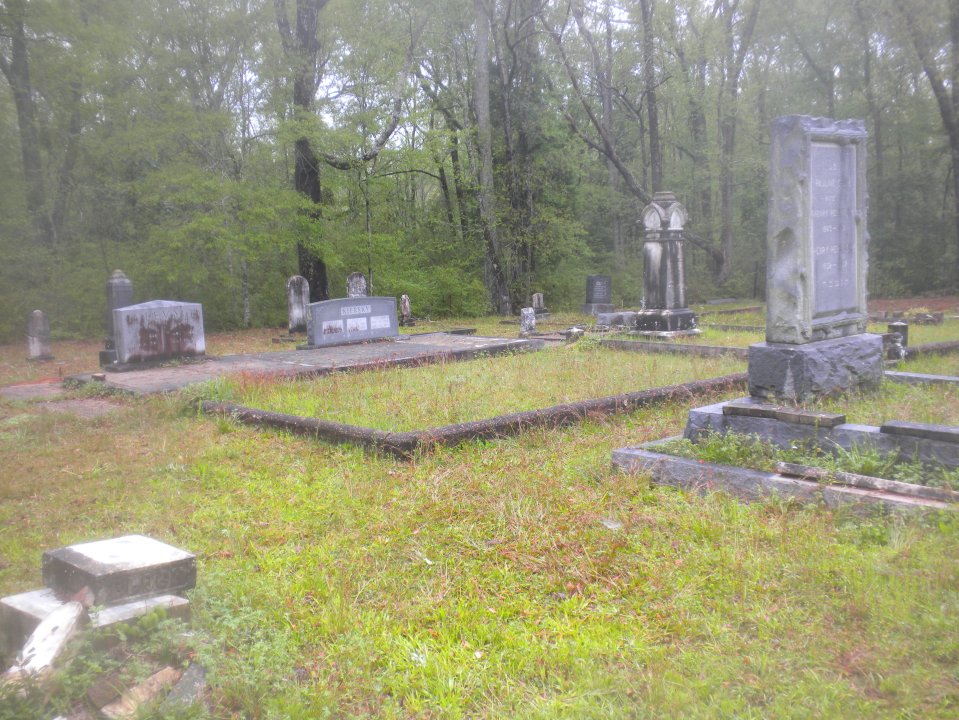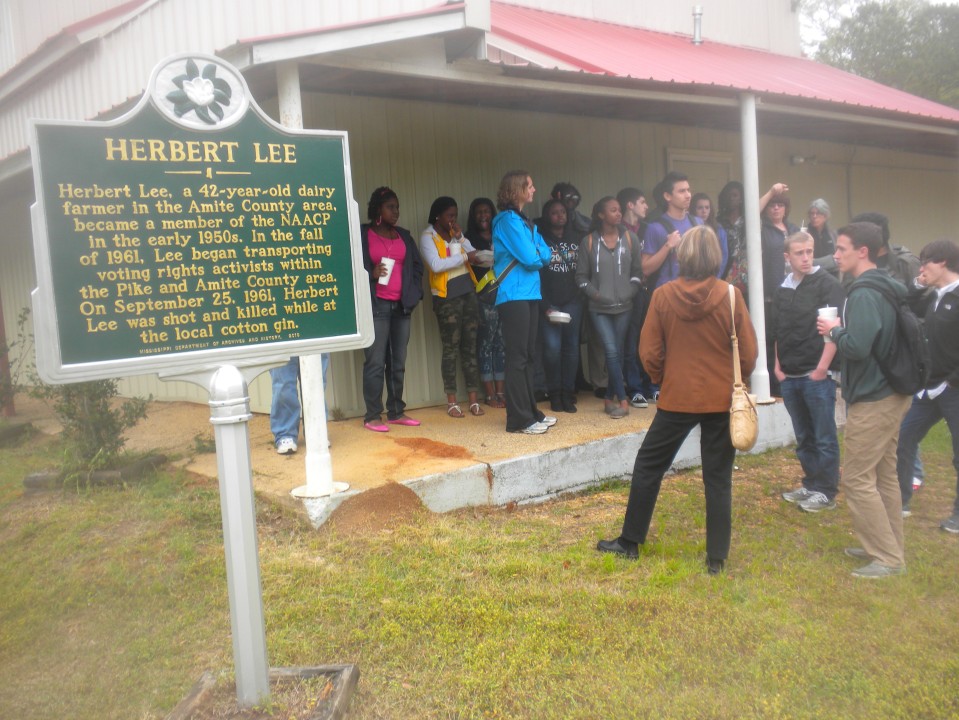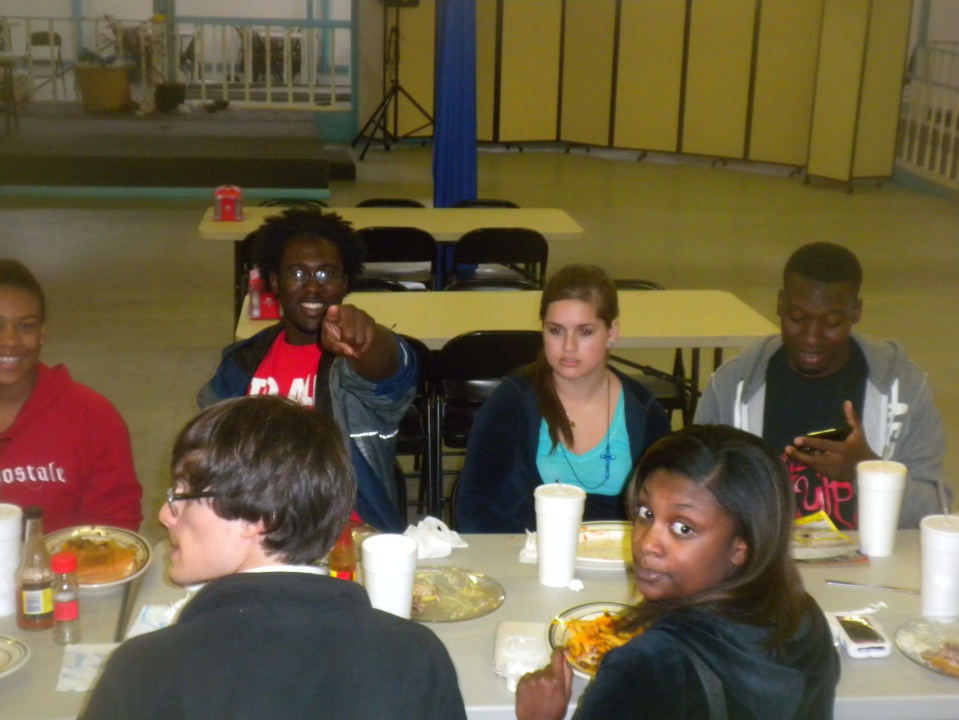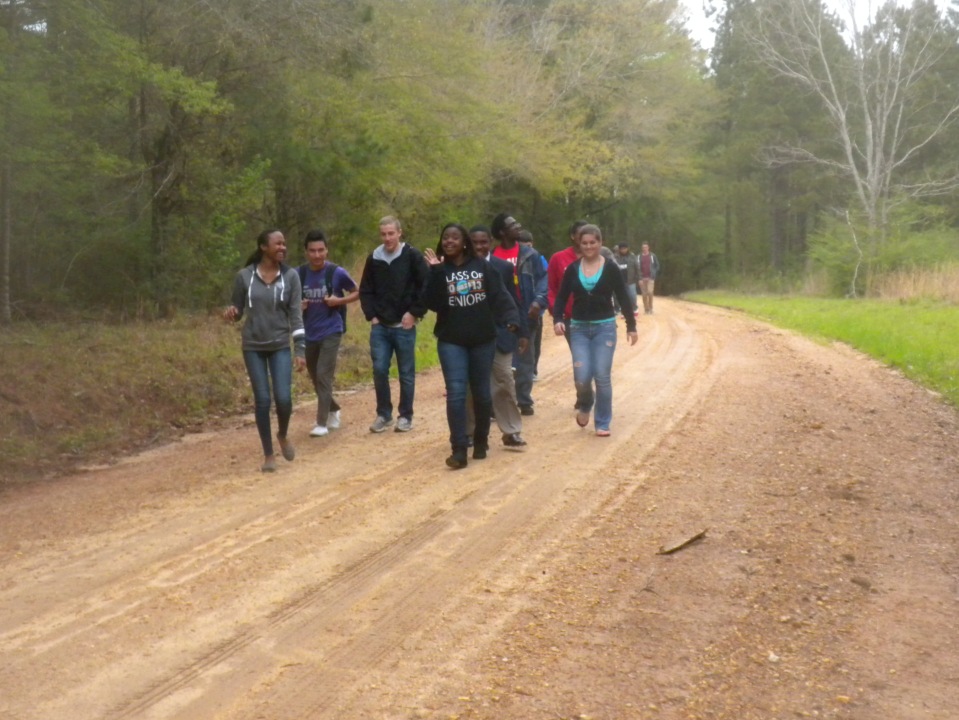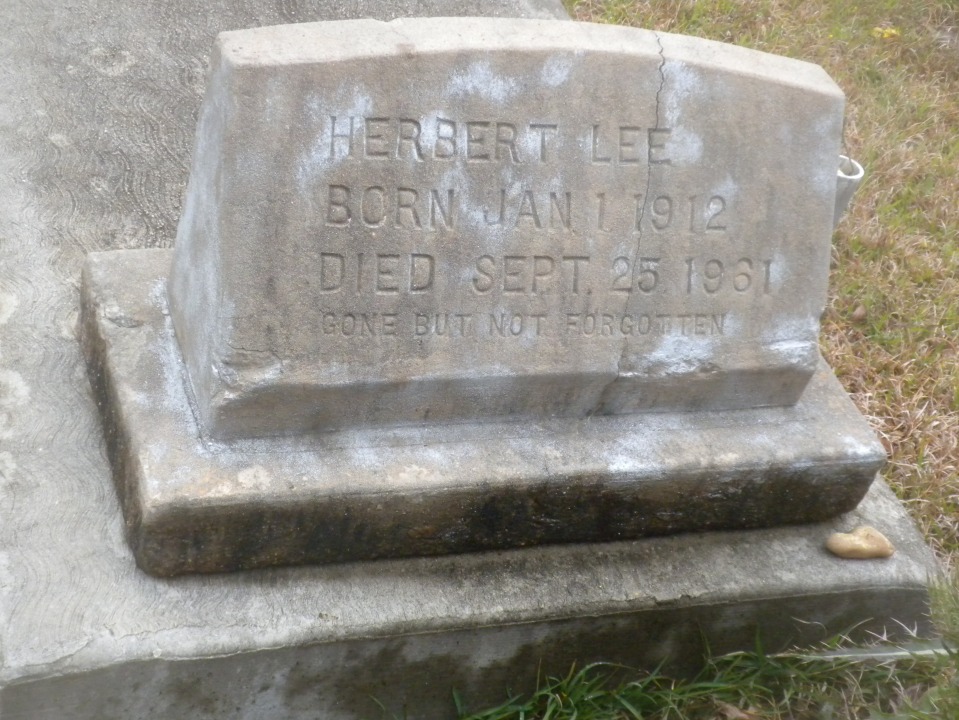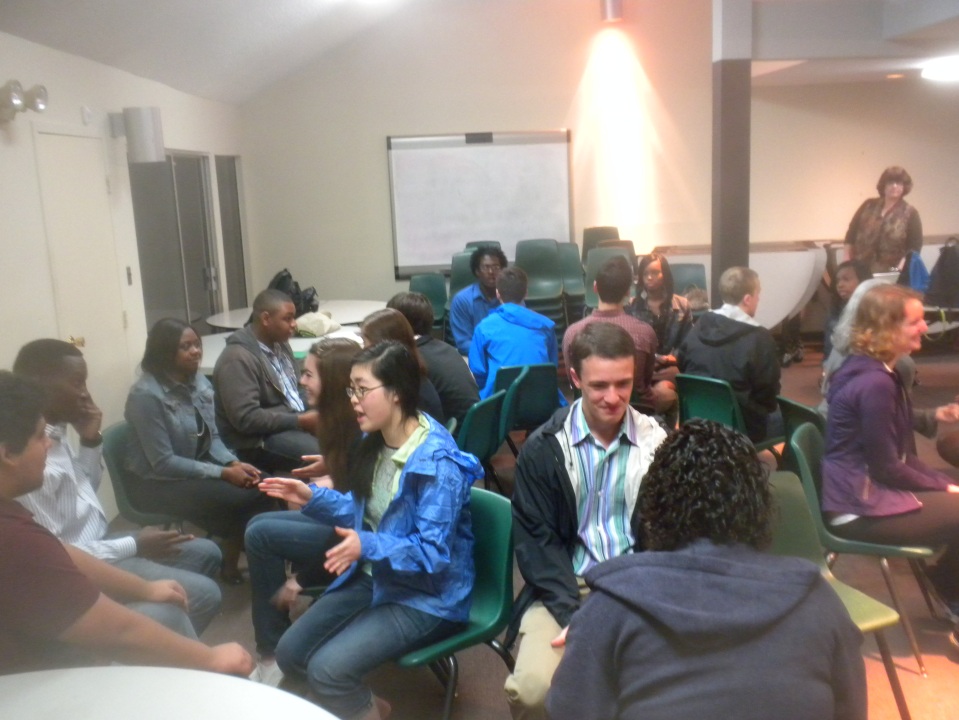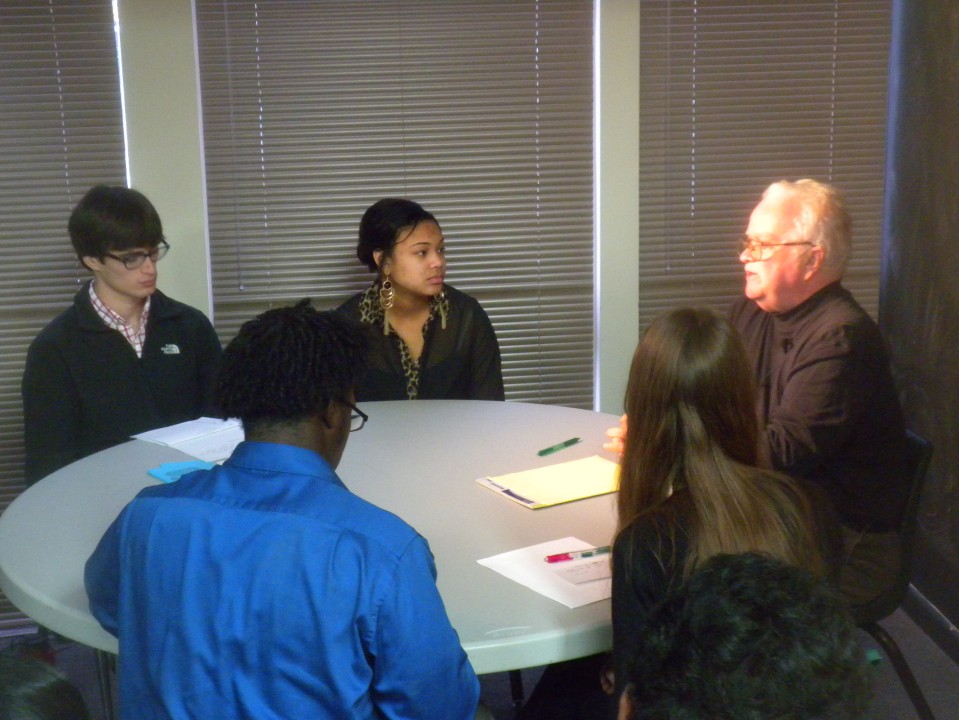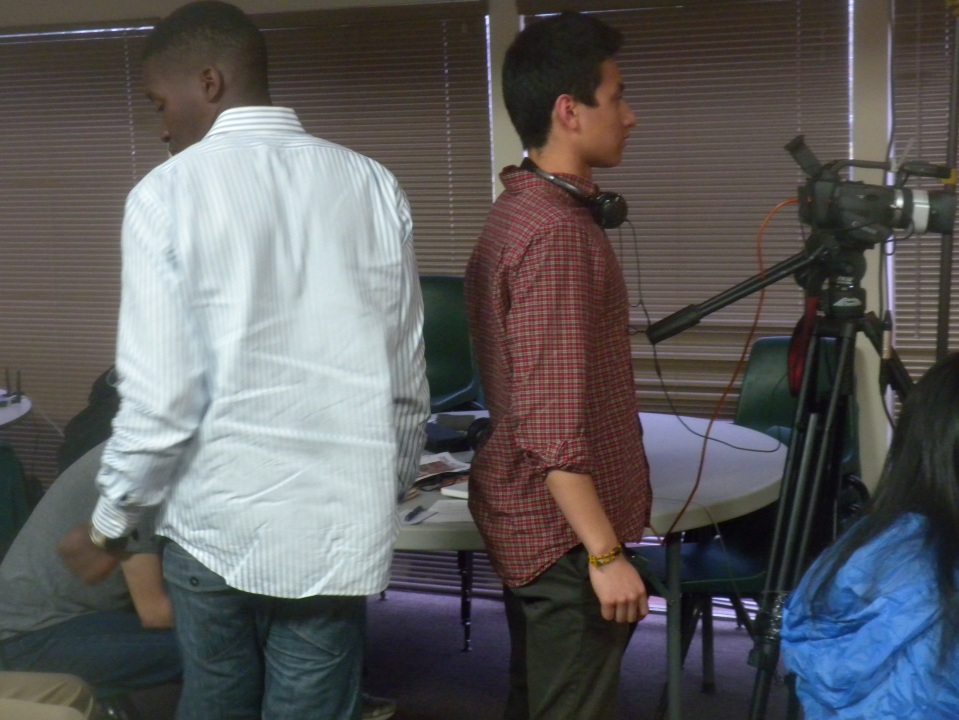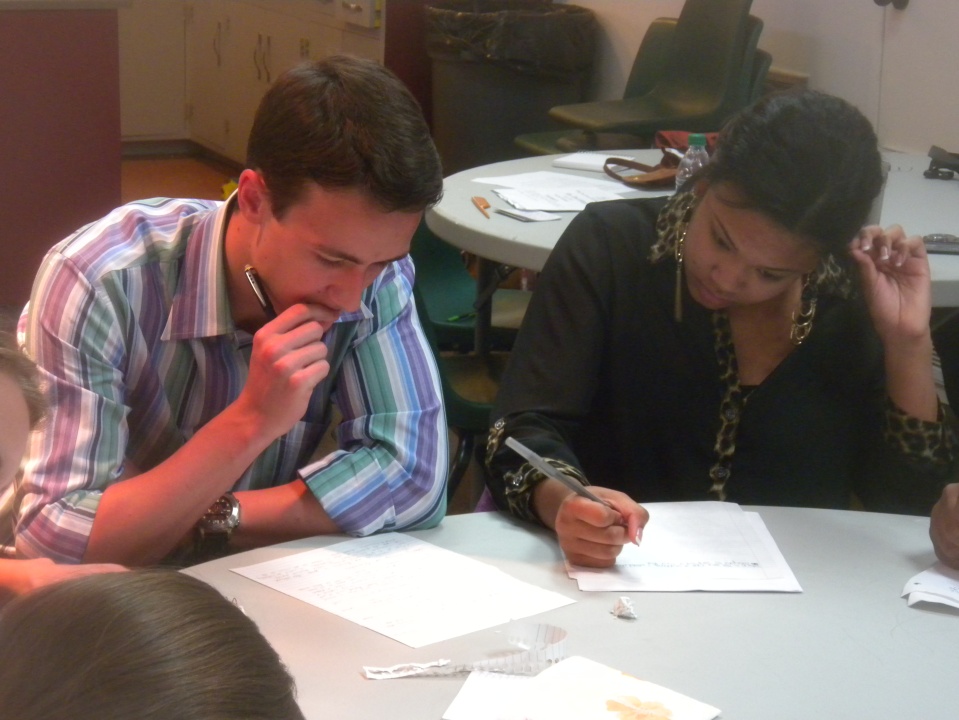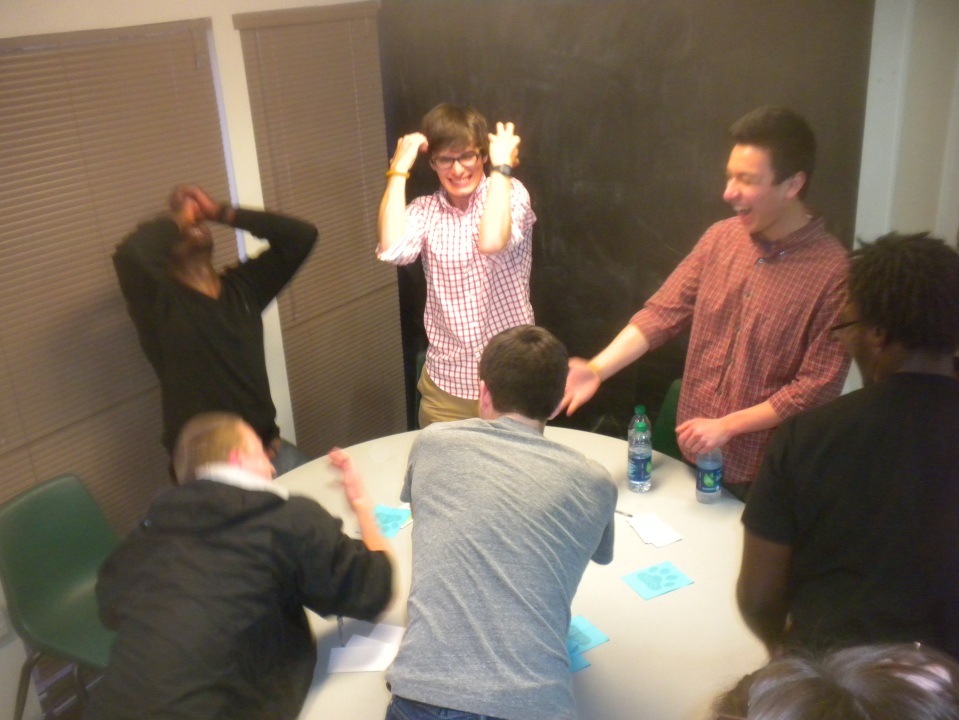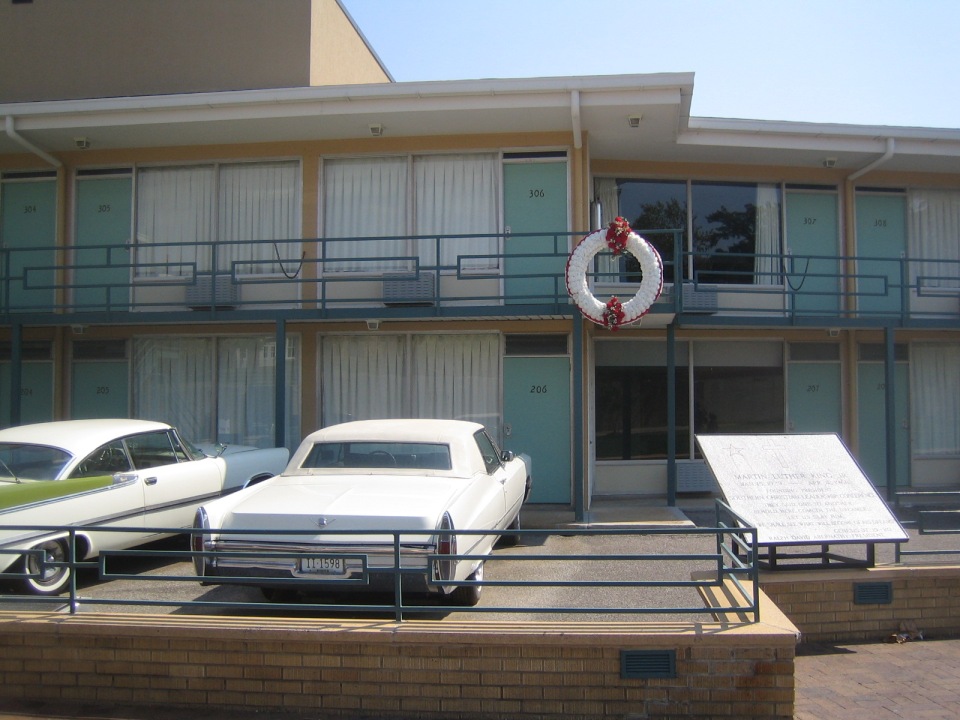
At the National Civil Rights Museum
April 1st:
After breakfast, we started the day off with the National Civil Rights Museum in Memphis, which is located in the rooming house from which Dr. King was shot on the porch of the Lorraine Motel. Before we went into the museum, we first visited the Freedom Sisters exhibition nearby, which is on national tour from the Cincinnati Museum Center. The exhibit featured twenty women, ranging from Harriet Tubman to Ida B. Wells to Shirley Chisholm, who played critical roles in the liberation of blacks and the civil rights movement. It was an excellent first non-meal stop because it’s important to keep in mind all the work that women, especially women of color, have done to impact the world for the better even though their names are not as well-recognized.

Learning from a docent at the National Civil Rights Museum
Next, we visited the civil rights museum itself. The museum is undergoing renovations currently, which are slated to be completed in 2014. Luckily we were able to visit the third that was still open and frankly that third was incredibly saturated with information. Upon entering the museum, we walked through a tunnel with a timeline of events in African American history. We then walked straight up to the second floor, which was concerned with the investigation into Dr. King’s assassination. On one black wall, the names of those who were assassinated lit up the dark backdrop, accompanied by a quote of Dr. King’s: “Darkness cannot drive out the darkness, only light can do that.” [DaB1] On the left of the wall, another message explained that assassination, the slaying of a leader, aims to extinguish hope, but so long as the message of the dead is not forgotten, the violence has not achieved its goal. The rest of second floor delved into the questions surrounding Dr. King’s assassination: Was James Earl Ray the only assassin? Was Dr. King persuaded by a treacherous colleague to come to the Lorraine Motel? Was it an FBI conspiracy? (Judging from the most recent 2000 investigation, evidence points to Ray being the only mastermind.) The first floor of the exhibit was more concerned with the nature of the fight for civil rights itself. Sadly, our examination of the displays was shortened by the need to visit the balcony before it closed at noon.
A large red and white wreath hangs off of the porch in front of Room 306, where Dr. King stood on the day he was shot. It was sobering to walk up the stairs of the rather nondescript motel and then stand where a national hero was shot[DaB2] . It was a strange feeling being in a place where such a huge historical event took place.
As just a quick note, apparently there was a lady outside the museum, who has been protesting for the past twenty-five years that the rooming house was turned into a museum instead of a homeless shelter. She found it distasteful that the location focused so heavily on the negative actions of James Earl Ray rather than perform a service for the community.
Afterwards, we sat in the sun on the grassy area outside the museum. Unluckily, at this point we found out that Lisa’s sister, Jenny, who with her husband, Mike, and daughter, Ruby, was traveling with us in Memphis, had their car broken into. While they went to deal with the unfortunate turn of events, Lauren and Emma talked to us about history of civil rights and of music in Memphis. Then, Mike returned and took us through the history of music in greater detail, observing that Memphis, a city which is ten miles away from many other important cities, served as the perfect crossroads of culture. He then played “Walking to Memphis” for us on his guitar.
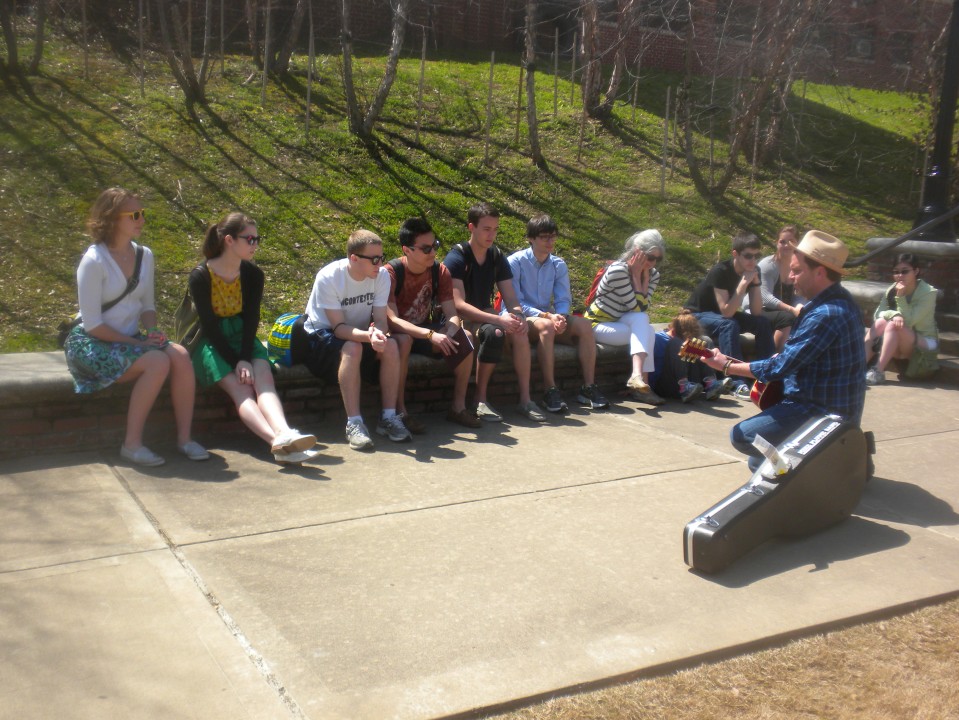
Mike Plume singing Marc Cohn’s “Walking in Memphis”
After establishing a solid foundation of music history, we drove to Sun Studio, where many famous blues and rock ‘n roll musicians, such as Ike Turner and Elvis recorded their songs. After a short wait in a room filled with music memorabilia such as some of the old 50’s portable recorders, we had a lovely tour through the studio from a lady, who turned out to only be nineteen.
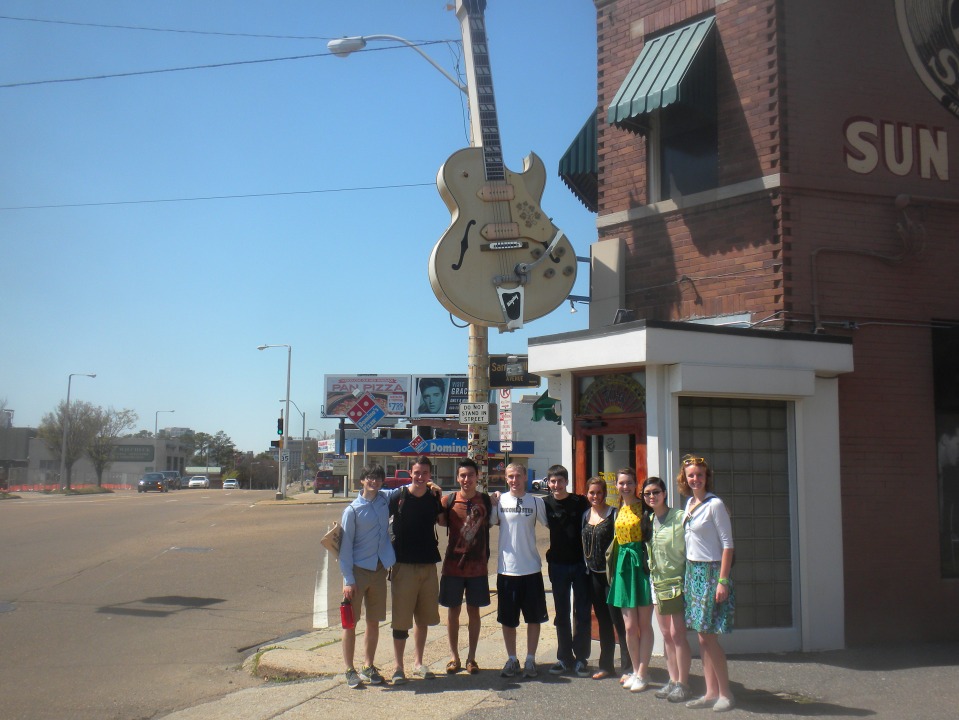
Sun Records–Where It All Began
The tour ended in the actual recording studio, which still had all the original paneling and floor tiles, so we were standing on the same tiles that Carl Perkins and Johnny Cash stood on. Black X’s marked the spot where Elvis and his first recording band stood in 1954. The microphone which Elvis had used also stood in the room and several members of our group took turns posing with it, though the tour guide warned us against licking the microphone in the desire to get up close and personal with Elvis’s DNA.
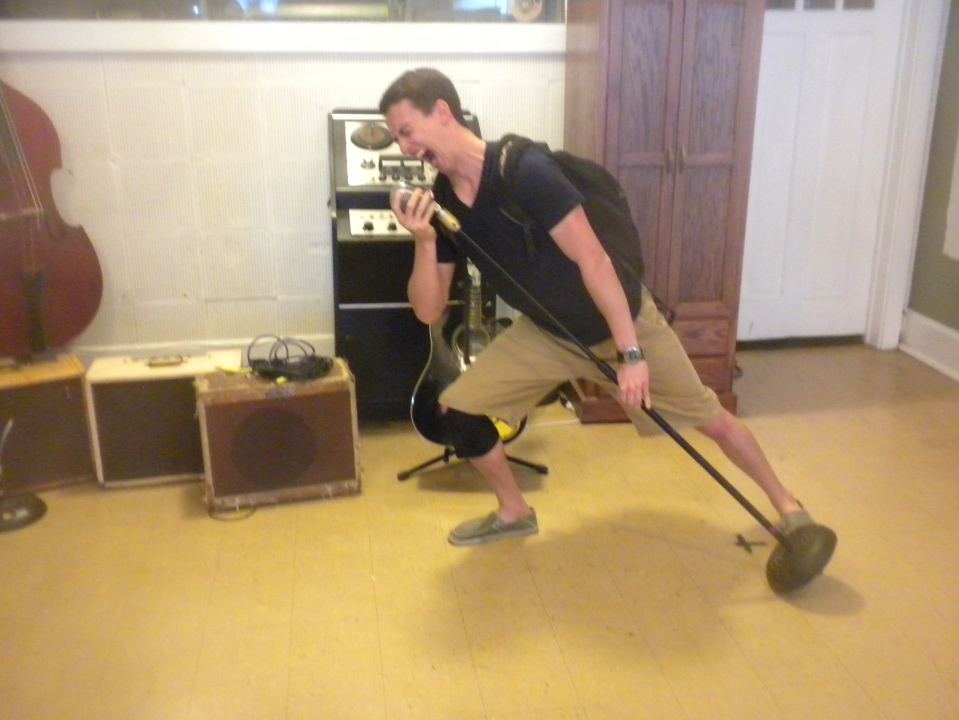
Pat–In the Footsteps of the King
By the time we finished roaming the gift shop, it was around 2pm and, hungry, we headed to Beale Street to grab lunch.
Beale Street is such a scene! There was loud blues music playing from every store, aromatic smells lingering on the sidewalk and people of every shape, size and color were milling around. It was a great experience. After we ate our delicious lunch of burgers and shakes, we made our way over to the Rock and Soul Museum. There we learned all about the music of the 50’s and 60’s and the origins. Much of the blues and R&B music came from share-croppers singing while in the fields. Next we looked at all the aspects of the million dollar quartet; Jerry Lee Lewis, Carl Perkins, Johnny Cash and Elvis Presley. We saw some of their costumes, microphones and records. We did the same for many other artists as well. After that, we took a short walk down to the Mississippi River. We could see Arkansas on the other side and we wanted to go, but there wasn’t enough time or reason to make the drive. Back on Beale, we sat down for dinner at the Blues City Café. We were all anxious to try the food, especially their famous ribs or catfish. Boy did they deliver! The dinner was spectacularly tasty and left us all contently stuffed.
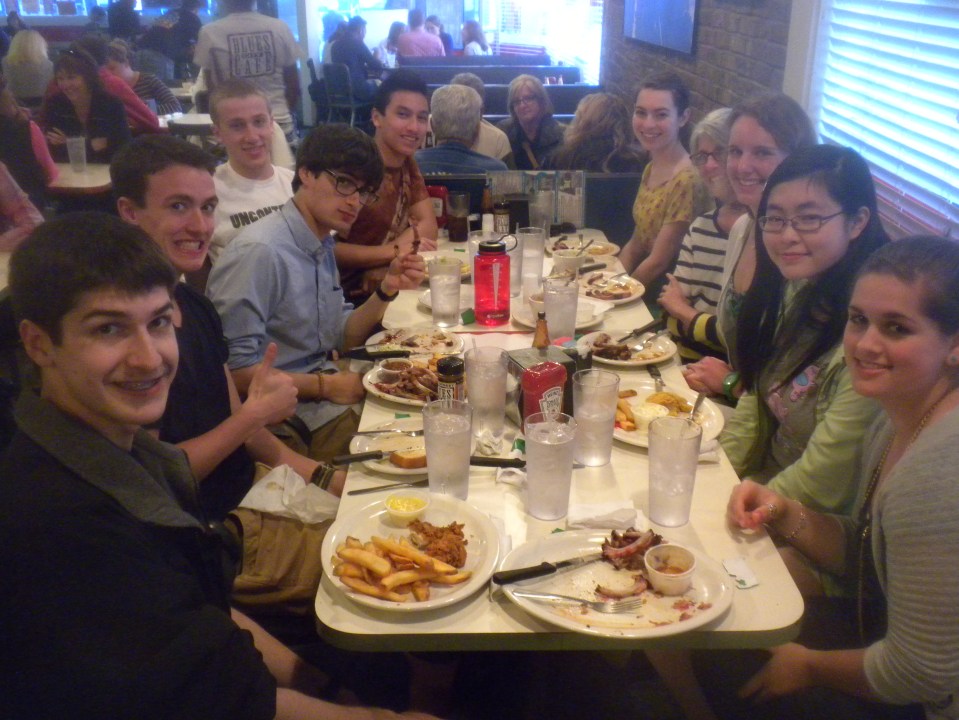
At the Blues City Cafe, Beale Street, Memphis

